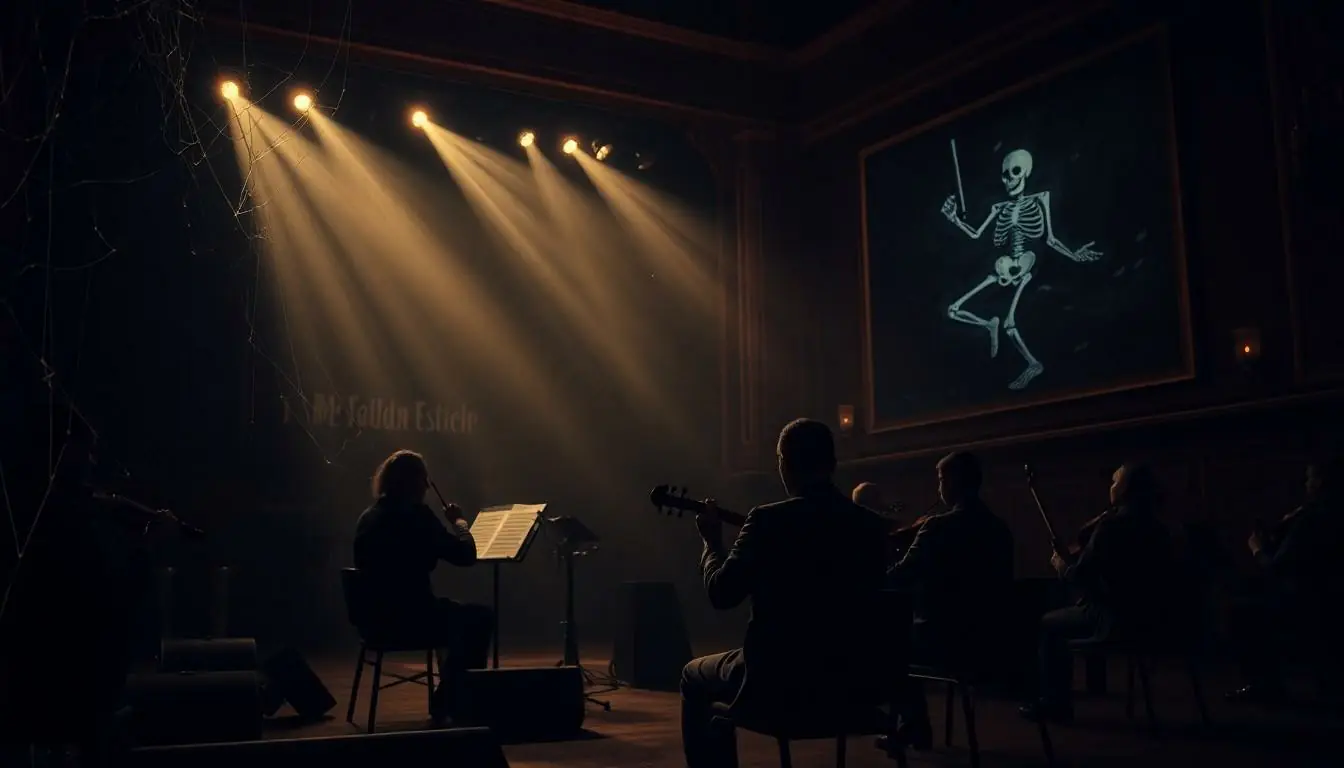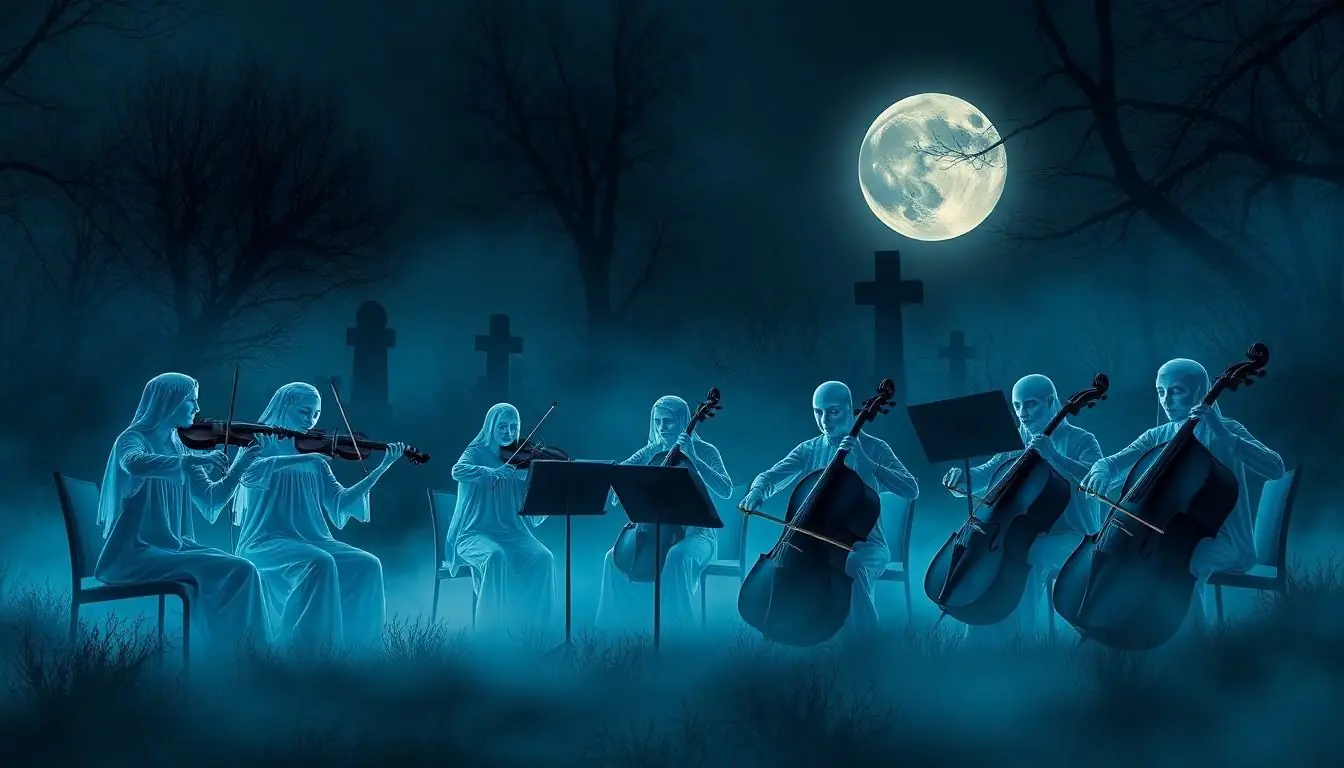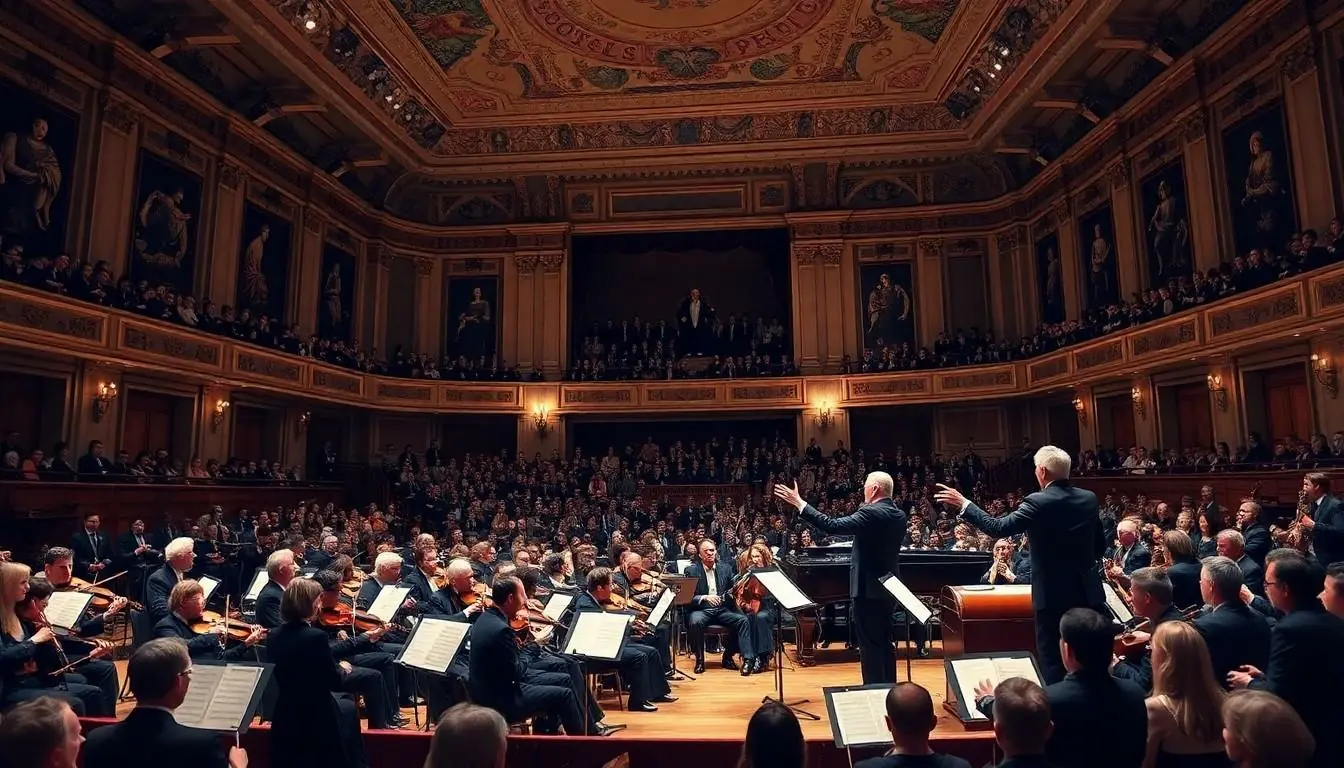When the leaves start to fall and the nights grow longer, a certain kind of music creeps into the air—spooky classical music. This genre isn’t just for haunted houses or Halloween parties; it’s a treasure trove of chilling melodies that can send shivers down anyone’s spine. Imagine waltzing through a graveyard with a ghostly orchestra playing in the background. Sounds fun, right?
Table of Contents
ToggleWhat Is Spooky Classical Music?
Spooky classical music embodies eerie compositions that conjure an atmosphere of mystery and suspense. This genre includes works that provoke a visceral response, enhancing the experience of fear and intrigue. Various composers utilize dissonance, unusual instrumentations, and haunting harmonies to create chilling melodies.
Notable examples include Camille Saint-Saëns’ “Danse Macabre,” famous for its relentless, dancing rhythm that captures the essence of skeletons rising from their graves. Franz Liszt’s “Totentanz” further contributes with its unsettling piano variations inspired by the dance of death. Additionally, Gustav Holst’s “The Planets” features the notorious movement “Mars, the Bringer of War,” known for its pounding, aggressive tempo that instills unease.
Subgenres like Gothic music, often infused with romantic elements, amplify the spooky experience. The use of organ and strings in these compositions enhances their haunting nature, resonating with themes from horror literature and film. Debussy’s “Clair de Lune” adds a different dimension, blending beauty with a slightly melancholic touch.
During Halloween, spooky classical music finds prominence at haunted houses and themed events. The chilling sounds create immersive experiences, transporting audiences to ghostly realms. Ultimately, this genre serves as a celebration of the darker aspects of classical music, engaging listeners with its blend of beauty and terror. It captivates while inviting them to explore the shadows through auditory engagement.
The Origins of Spooky Classical Music

Spooky classical music has deep roots in both history and culture. This genre has evolved from various musical traditions, intertwining elements that evoke a sense of eeriness.
Historical Context
Eighteenth-century composers began experimenting with themes of the supernatural. The Enlightenment brought fascination with ghost stories and the macabre, influencing musical expressions. Compositions often reflected societal fears, culminating in darker narratives. By the nineteenth century, the Romantic era pushed these themes further, incorporating intense emotions and the exploration of death. Opera became a notable stage for these eerie themes, with productions like Donizetti’s Lucia di Lammermoor captivating audiences with haunting melodies.
Influential Composers
Several composers have significantly shaped spooky classical music. Camille Saint-Saëns crafted Danse Macabre, a vivid depiction of skeletons dancing at midnight. Franz Liszt’s Totentanz, a powerful adaptation of the Dies Irae, presents a chilling portrayal of death’s inevitability. Gustav Holst infused drama into his Mars, the Bringer of War, echoing violence and tension. Other composers, such as Béla Bartók and Arnold Schoenberg, contributed dissonant motifs that heighten eeriness. These influential figures collectively enhance spooky classical music, creating an atmosphere that draws listeners into the unknown.
Iconic Pieces of Spooky Classical Music
Spooky classical music features several iconic pieces that embody its eerie essence. Notable works evoke feelings of suspense and mystery, captivating audiences during the fall season and Halloween celebrations.
“Danse Macabre” by Camille Saint-Saëns
“Danse Macabre” reflects a haunting vision of death’s dance during midnight. The composition, premiered in 1875, uses a xylophone to represent rattling bones. Its opening violin melody establishes an eerie atmosphere, setting the stage for the macabre theme. The piece builds tension through contrasting dynamics and rhythmic accents, leading listeners through a chilling narrative. Consequently, the imagery of skeletons dancing adds a visual component that enhances the auditory experience.
“Night on Bald Mountain” by Modest Mussorgsky
“Night on Bald Mountain” invites listeners into a world of darkness and supernatural forces. Composed in 1867, it portrays a witches’ sabbath, complete with thunderclaps and eerie chants. Mussorgsky’s expert orchestration elevates the work, blending powerful brass with haunting woodwinds. The relentless drive within the music creates a palpable sense of urgency, as if spirits are rising from the shadows. This piece has gained immense popularity, especially in Halloween-themed events, becoming synonymous with the realm of the supernatural.
The Impact of Spooky Classical Music in Popular Culture
Spooky classical music plays a significant role in popular culture, especially within film and television. Many directors utilize eerie compositions to evoke emotions and enhance storytelling. For instance, “Danse Macabre” often appears in horror films, setting a chilling atmosphere. Soundtracks frequently feature selections from composers like John Williams and Hans Zimmer, who incorporate spooky classical themes for greater impact. Through ghostly melodies, filmmakers augment tension and intrigue, captivating audiences and deepening their engagement with the narrative.
Film and Television
Film and television adaptations often showcase spooky classical music for maximum effect. Classic horror films like “Psycho” highlight Bernard Herrmann’s use of strings to amplify suspense, while modern productions adopt similar techniques. Eerie selections in shows strengthen connections to fear and uncertainty, reinforcing themes of the supernatural. As a result, composers draw on the haunting qualities of classical pieces, providing an auditory backdrop that resonates with viewers. Audiences associate these sounds with fear, ultimately enhancing their cinematic experiences through familiar eerie melodies.
Halloween Traditions
Halloween traditions widely embrace spooky classical music, heightening the festive atmosphere. Many celebrations feature playlists filled with haunting compositions to create an engaging environment. Classic pieces like “Night on Bald Mountain” become staples during Halloween parties and themed events, mesmerizing guests with chilling orchestration. Scary films also play a role, as many families enjoy watching these movies accompanied by haunting soundtracks. This musical genre has solidified its status as an essential part of Halloween culture, bringing together communities through shared experiences of thrill and excitement.
Spooky classical music offers a captivating blend of beauty and terror that resonates deeply with listeners. Its ability to evoke feelings of suspense and intrigue makes it a staple during the fall season and Halloween celebrations. From haunting melodies to eerie orchestrations, this genre invites audiences to explore the darker side of classical music.
As composers continue to push the boundaries of sound, spooky classical music remains a powerful tool in storytelling across various media. Its impact on popular culture reinforces its significance in creating immersive experiences. Embracing spooky classical music not only enhances seasonal festivities but also connects people through shared moments of thrill and excitement.




